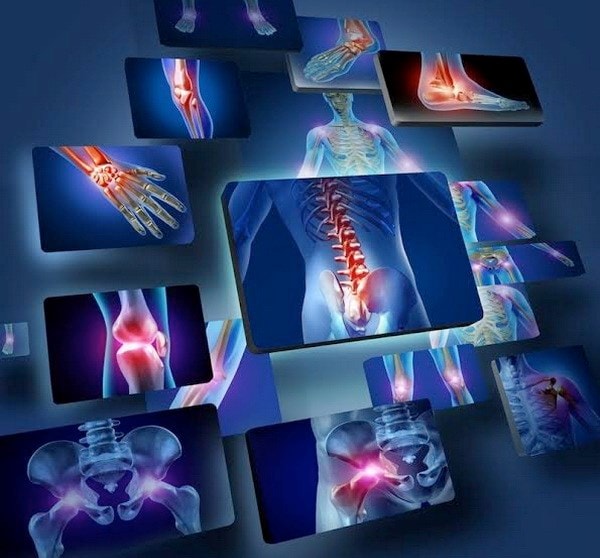Strange mysteries about 10 human body parts
The human body is full of mysteries and for a long time the human body has been the subject of research, even dissected by scientists, there are still organs whose reason for existence we still do not fully understand.
 |
| Body parts. (Source: livescience.com) |
Some body parts are very important, others seem or really have no use. There are some parts that scientists still don’t know what their function is, or that don’t get much attention. Here is a list of 10 lesser known body parts.
A part of the knee
The human body is so complex that after centuries of dissection, scientists are still discovering new parts.
Last November, Belgian researchers reported for the first time a ligament in the human knee, called the Anterolateral Ligament. A French surgeon had discovered the ligament in 1879, but it had remained unverified until now.
This new discovery could shed light on some injuries in which the knee misaligns when moving in a certain direction.
Second class
In another surprising discovery, scientists have discovered a new part of the human eye. This thin and relatively solid structure, called the Second Layer, is only about 15 microns thick, or one thousandth of a meter, and is located behind the cornea.
Discovering this second layer will help researchers better understand some eye diseases that can be caused by damage to this part.
accessory ribs
A normal person has 12 ribs on each side of the body, but some people have an extra rib, and this can cause health problems.
This extra rib, called a cervical rib, occurs in about 0.05-3% of cases. It develops from the neck just above the collarbone, and sometimes doesn't develop into a full bone but instead remains a thin piece of muscle.
This extra rib can cause health problems if it presses on blood vessels or nerves, causing shoulder pain, neck pain, loss of feeling in the limbs and blood clots.
Ear muscles
Dogs, cats, and some lucky humans have the ability to wag their ears thanks to a group of muscles called the auricular muscles. This group includes the preauricular muscles, which move the ear forward; the supraauricular muscles, which move the ear up; and the posterior auricular muscles, which move the ear backward.
Although we all have these muscles, only about 15% of the population can use them to flap their ears. This was a useful skill when prehistoric humans needed to use their ears to listen for warning sounds. But today, this ability is just for fun.
Epidermis
The cuticle is the hard layer of skin at the base of the nail, where the nail meets the finger. Under this cuticle, the new nail is forming. Almost invisible, this small part of our body helps us protect our bodies from bacteria and dirt.
Hyoid bone
The hyoid bone is a type of bone found only in humans, it is also the only bone in the body that is not attached to any other part, and is the basis for pronunciation.
This U-shaped, horseshoe-like bone is located in the throat, between the chin and . At that location, the hyoid bone combines with the larynx and tongue to produce the human voice.
Coccyx
The coccyx is formed by the fusion of the last vertebrae of the spine and is a remnant of the tail that other mammals have. It was previously thought that the coccyx served to anchor small muscles and support the pelvic organs. However, there have been many cases of coccyx removal without negative consequences.
Some children are born with a very long coccyx. Today, the unusually long bone can be easily removed surgically, but in the Dark Ages, this long bone was synonymous with the devil, and the child and his mother were both executed.
Bones disappear
There are many interesting things about the human skeletal system. One of them is that adults have fewer bones than children. We are born with 350 bones, but as we grow some bones fuse together and we end up with only 206 bones when we reach adulthood.
Stomach regenerates itself
Our stomach is automatically renewed every 3-4 days, because the stomach wall is always replaced by new cells. In fact, the stomach constantly creates new layers to avoid being decomposed by the acid contained inside it.
Philtrum
The philtrum is a perpendicular groove in the middle of the upper lip. In some animals, it enhances the sense of smell by keeping the area around the nose moist, but in humans it has no known effect.
It is likely that because humans rely more on vision than on other sensory organs, the philtrum has lost its function and is now a relic of evolution. However, scientists are still very interested in this organ because it forms at a certain point in fetal development, and this is a clue to explain mutations in fetal development.
Different forms of the philtrum have been studied in certain disease conditions and have even been suggested to be linked to autism./.
According to Vietnam+






